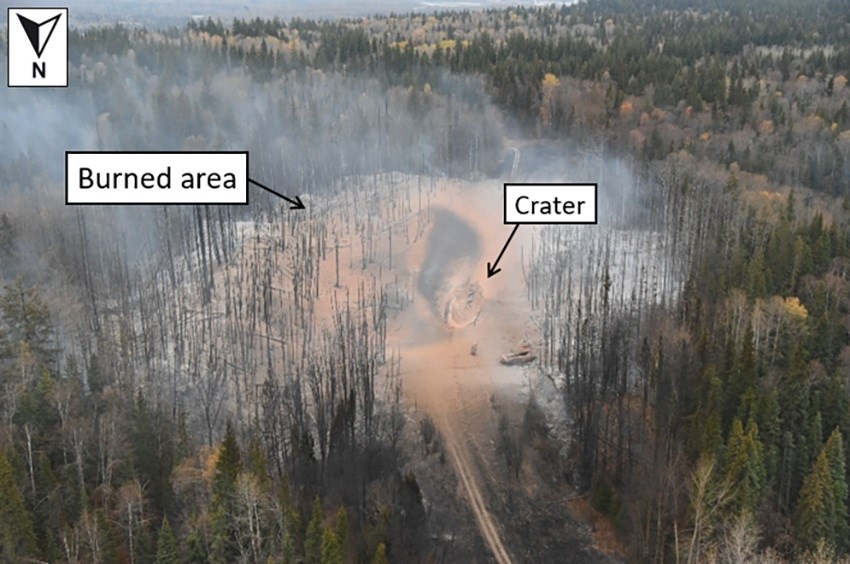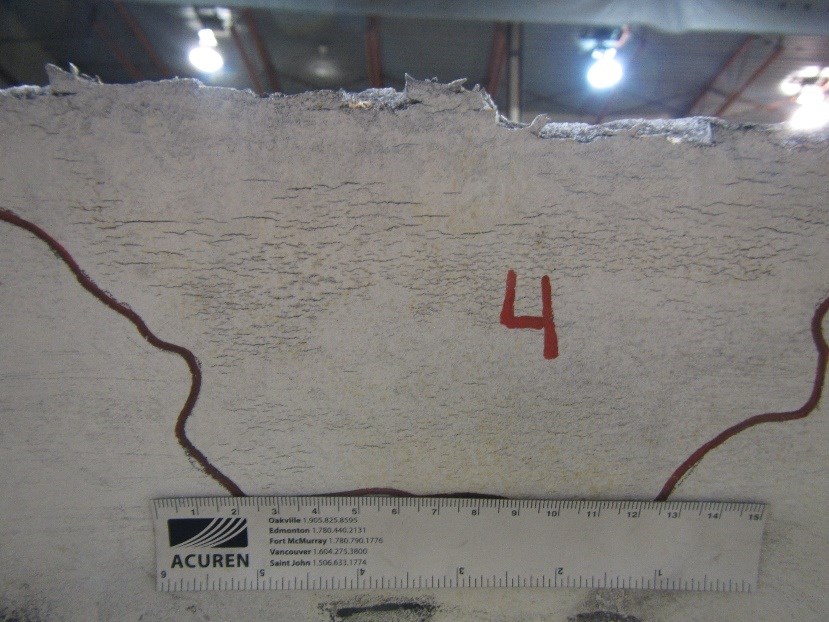Enbridge has issued a response to the Transportation Safety Board of Canada's report released today (March 4) into the findings of the cause of the pipeline explosion near Prince George in 2018.
At roughly 5:30 p.m. on Oct. 9, 2018, the 36-inch pipeline operated by Enbridge Inc. ruptured roughly 13 km northeast of the city.
Once ruptured, natural gas ignited and resulted in a fire that caused some 100 people in the Lheidli T'enneh First Nation to be evacuated.
"We know this incident has caused concerns and disrupted the lives of many people in the area. For that, we apologize," Senior Vice President and Chief Operations Officer, Gas Transmission and Midstream for Enbridge Michele Harradence said in a release.
"We commit that we have learned from this incident and have taken steps to ensure the safety of our natural gas system."
Enbridge responds to TSB natural gas pipeline incident report: https://t.co/jAZfSsaST2.
— Enbridge (@Enbridge) March 4, 2020
The company says since the incident, they have completed a comprehensive pipeline integrity program on its natural gas pipeline system in B.C. to help stop similar events from happening going forward and improve pipeline safety.
"This is the most aggressive integrity program ever undertaken on its pipeline system in B.C.," the release adds.
"It's part of a new approach to pipeline safety and ongoing commitment to continually improve the safety of our natural gas pipeline system."
The company says the program includes:
- Enhanced pipeline inspections
- The entire T-South natural gas pipeline system has been inspected with the latest generation inline pipeline inspection tool. This tool has double the number of sensors than previous inspection tools and is significantly more accurate at assessing potential problems like stress corrosion cracking
- The T-South mainline system now is 100 per cent inspected by this tool
- We will continue to use this inspection tool going forward, conducting inspections with it more frequently
- Enhanced Maintenance Screening Criteria
- In conjunction with these pipeline inspections, we've implemented more comprehensive criteria to evaluate the pipeline inspection data. This will identify potential risks earlier that may require monitoring and proactive maintenance work
- Increased Integrity digs
- As a result of this enhanced screening criteria, we've increased the number of integrity dig inspections undertaken in a normal maintenance year. During an integrity dig, we excavate a section of pipe to examine it further, validating its safety and undertaking proactive maintenance work if it is required. In 2019, we more than doubled the number of digs undertaken to validate the safety of our pipeline system compared to previous years
"At Enbridge, no incident is acceptable – ever. If an incident were to occur, we will implement changes to ensure the ongoing safety of our pipeline system," the statement continues.
"Since the Shelley incident, we have completed a comprehensive integrity program on our T-South natural gas pipeline system and implemented a new approach to pipeline safety that goes well beyond the industry standard. We are reviewing the TSB report carefully and are committed to making further changes as needed to continually improve pipeline safety."
Stress corrosion cracking led to October 2018 pipeline rupture and fire near Prince George, British Columbia https://t.co/r9bdfZ6XVN #TSBPipeline
— TSB of Canada (@TSBCanada) March 4, 2020
Construction of the NPS 36 L2 pipeline (where the explosion occurred) was completed in 1972.
"It was successfully hydrostatically (strength and leak) tested by Westcoast prior to approval for service by the National Energy Board (NEB) in October 1972," the TSB report says.
The investigation found that the pipeline exploded due to stress corrosion cracks on the outside surface of the pipe; and that the polyethylene tape coating applied to the exterior surface of the pipe as a measure to protect it from corrosion deteriorated over time.
"This allowed soil moisture to come into contact with the pipe surface, leading to corrosion and cracking," the report also stated. "Growing and merging over time, the cracks reduced the load-bearing capacity of the pipeline at normal operating pressures."
 Interacting cracks shown on a portion of section 1 of the ruptured pipe. (via Transportation Safety Board of Canada)
Interacting cracks shown on a portion of section 1 of the ruptured pipe. (via Transportation Safety Board of Canada) The crater that was created during the rupture and ejection of the pipeline from the ground was about 35 m long, 13 m wide and had a peak depth of about 9 m.
 Aerial view of the area affected by the fire that resulted from the pipeline rupture. (via Transportation Safety Board of Canada)
Aerial view of the area affected by the fire that resulted from the pipeline rupture. (via Transportation Safety Board of Canada)"The cracks grew over time due to a near-neutral pH environment combined with operating stresses and eventually coalesced into a larger single crack," the report reads.
"This reduced the load-bearing capacity of the pipeline steel until the critical crack size was exceeded and an instantaneous overstress fracture of the pipe occurred at normal operating pressures. The crack characteristics were consistent with near-neutral pH SCC."
The Transportation Safety Board of Canada also said in its report the stress corrosion cracking electromagnetic acoustic transducer in-line inspection for the 4AL2 segment was scheduled for 2017, but then moved to late fall of 2018, which resulted in the existing cracks remaining in the pipe undetected until failure.
"There were no records indicating that a proposed deviation, rationale or technical assessment had been done, or that the deferral request had been approved, even though Westcoast’s standard operating practice required these to be documented," the report states.
The TSB said the emergency response activities that took place once the rupture happened were successful in mitigating the impacts of the explosion.


